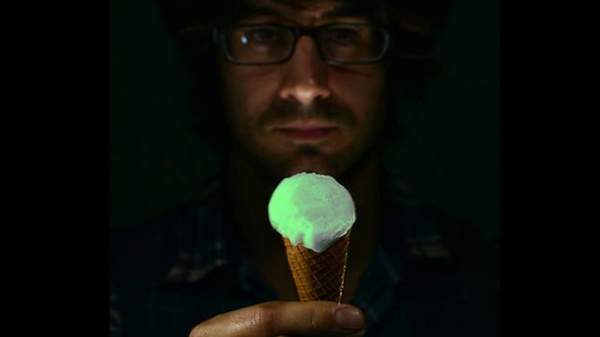Overview
One very visionary, mad-scientist type of ice-cream maker, Britain's Charlie Francis of Lick Me I'm Delicious, recently had a sudden flash of inspiration while casually reading a research paper on the properties of underwater invertebrates (as you do). Why don't I hire a Chinese scientist to synthesise luminescent jellyfish protein with ice cream?, he mused. It all seemed so blindingly obvious. And thus, just in time for Halloween, a spooky glow-in-the-dark ice cream was born.
So how does it work? The chemically recreated, calcium-activated protein, sourced from jellyfish, suffuses the dairy delight with an unmistakable iridescence, far stronger than the subtle blue glow of quinine. (Were you even aware that quinine has a fluorescent quantum yield that's visible under a UV light? That's fancy-talk for it glows in the dark. Your humble gin and tonic can glow in the dark.)
Adorably, the pH of your tongue affects the protein, such that the ice-cream grows more luminous the more you lick it. Just like the beautiful phosphorescence you might have seen at night on a tropical holiday — tiny specks of plankton that glow whenever waves break over them.
The cost of a scoop of this insane novelty experience? A mere $225. We don't think it will appear at Gelato Messina anytime soon, but we are hoping that the trend for glowing food catches on, and brings the price down so we can all have more fun when the lights go out.
In the meantime, Francis offers a much cheaper gin and tonic-flavoured sorbet, using the above mentioned high-tech quinine technology.
Just imagine all the types of dessert innovation this invention could catalyse. Francis has a lot of other exciting plans and ideas for future treats, including "invisible ice cream". Could this have anything to do with recent developments on the light-bending invisibility cloak front? We can but speculate. His blog gives a shout-out to any scientist interested in helping with the project, so if you're of such a stripe, get involved. Dessert-lovers of the world need you.
Via PSFK.
